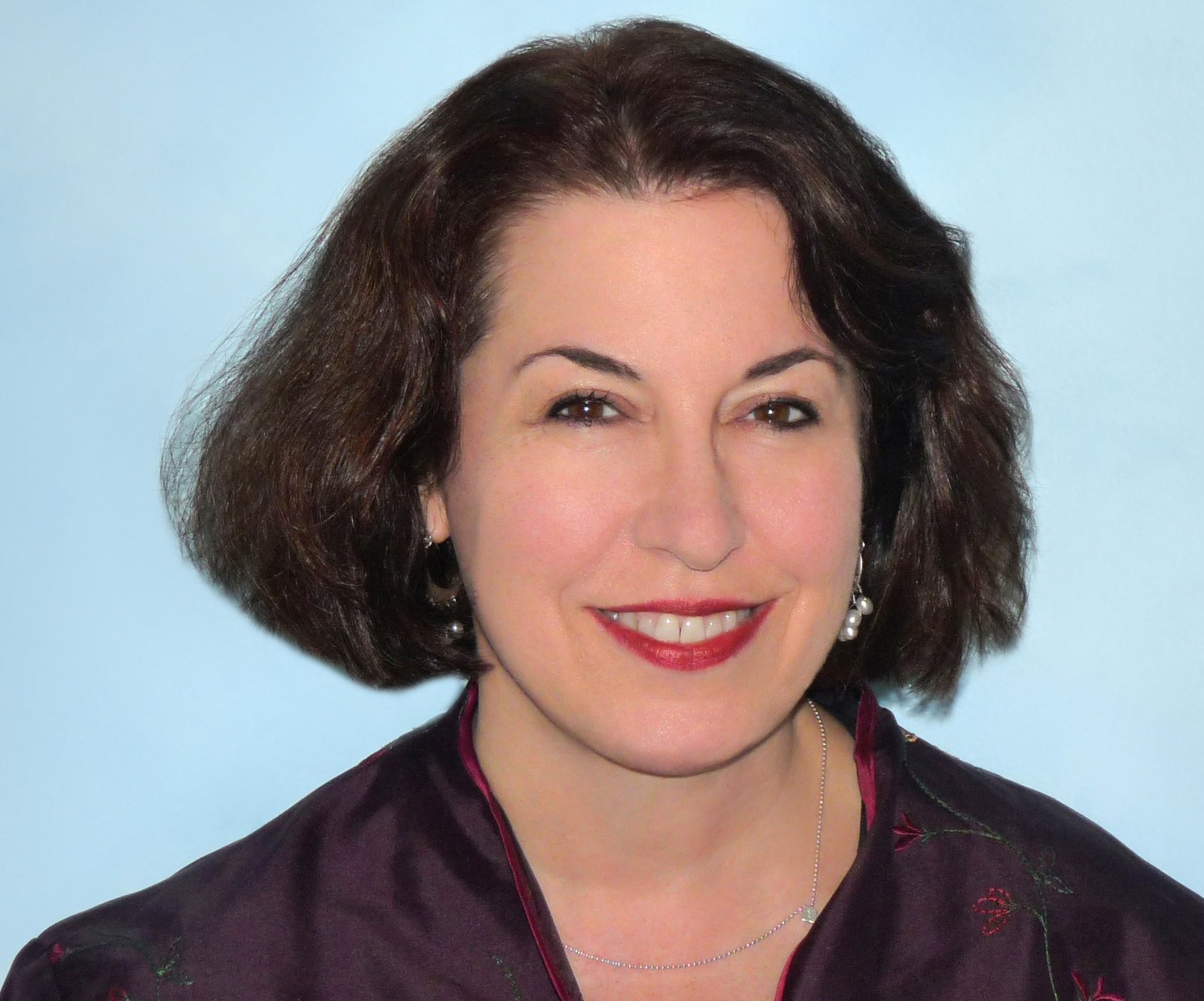
Ellen Williams founded B2B R & D to offer a solution to help professional marketers.
With over 2.5 Quintillion bits of data created every day – Facebook users like 4,166,667 posts, Youtube users upload 300 hours of new video, Pinterest users pin 9722 images, 347,222 tweets are sent, etc.
For companies, marketing agencies, or marketers to keep up and stay on top of news, trends and updates and social media is a herculean, if not impossible task.
I sat down with Ellen recently to learn more about her firm.
Jane Tabachnick: Ellen, tell me what is B2B R&D?
Ellen Williams: B2B R&D is a fantastic resource for professional marketers to maintain their knowledge of all the news, trends and changes going on weekly in the world of digital marketing.
We spend hours every week reading top websites, influencers, news and really reputable places that most professional marketers already read, but no one is going to read all of them. In fact it really is a very time consuming process to read everything that’s out there and do their job at the same time. We found if that is the job, it allows us a great deal of time to really research and resource the best information available.
Jane Tabachnick: Who is your target audience?
Ellen Williams: We work with professional marketers, and it’s by self-definition, so we do have a couple different personas. We went through the process this year of identifying three distinct personas; the small solo or two-person organization who offer marketing services such as social media and email marketing, web design, and graphic arts, agencies that have multiple marketing professionals, and the marketing professional in a business that has nothing to do with marketing, and it’s their role as market research to make sure that all the content and the strategy is appropriate with the changes going on in the world of digital marketing itself.
Jane Tabachnick: How did B2B R&D get started?
Ellen Williams: I have been working with small businesses for pretty much my whole career. I’ve been an entrepreneur off and on for about twenty-six year. In the mix was four years where I had the pleasure of being the Regional Development Director at Constant Contact and in that role I had the opportunity to work with Constant Contact’s reseller channel, which they refer to as their solution providers. Many of the solution providers, if not all of them, are small businesses, one to two person businesses, professional marketers, and email marketing, utilizing Constant Contact was one of the services that they offered in addition to the range of other products that Constant Contact offers.
In my travels through my region of New York and Connecticut a lot of what I heard from everyone was that they were just time constrained. The need to stay on top of the best practices while still being able to service their clients was really difficult for a smaller organization. They didn’t have many resources at their disposal and so for those that I worked most closely with, I started sending them emails with information ‘have you seen this’, ‘here’s a link to something important’, ‘did you know about this and here’s how you can implement it’. They really found value, and it was saving them time and keeping them informed. At one point, one of them said to me, “this is great, you’re like my R&D department,” and I went hmm, “that’s pretty interesting”.
If that person needs this maybe more people do too. Maybe more than just the Constant Contact reseller channel does. As the role at Constant Contact evolved from when I was first hired – basically marketing and public speaking and leading the seminars – over the four years, it had really evolved to working a lot more with the reseller channel to the point where it was almost sales manager. It really was becoming outside of my strong suit, which was marketing and public speaking, so I graciously left Constant Contact and started B2B R&D feeling that the industry of professional marketers could use a hand.
Jane Tabachnick: It really does take a village doesn’t it?
Ellen Williams: It really does when you start talking about education. When you start talking about not just what you know and what you’re good at, but the fact that what you’re doing is in an industry where the changes are so frequent and so dramatic, hinge on trends, and in some case the whims of the consumer.
You know the strategy you lay out today will be good for a couple months, but if you haven’t modified it by then, you know it’s missing the changes that happened between now and then. If you don’t at least stay on top of the trends that bubble to the top, you’re going to find that your competitors may start to get the edge. It really does take a lot of time and effort to maintain an education while still offering services or doing your job. If we can bring that down to a smaller amount of time, then we’ve done our job right.
Jane Tabachnick: I absolutely see the value in what you do and the service you provide. Can you give us an example of how marketers or companies really benefit the most from B2B R&D?
Ellen Williams: There’s a couple of ways. We have a proprietary search engine that we developed. We call it Re-Search and it contains the content we’ve created based on everything we’ve read. It also includes links back to the content we read and that can be used in a multitude of ways. Since it’s a search engine and also a database, the content can be tagged and really formulated and massaged in a way that’s relevant to the person using it. We’ve seen it used as research for a blog post, so all the news and trends happening around a certain topic were tagged and brought together. Then our subscriber used the links and read through the resources to create their own blog post. Re-Search not only maintained their knowledge but also allowed them to maintain their expertise and thought leadership online.
Additionally, no one knows everything but it’s really advantageous that the marketer’s customers think that the marketer does! One of our subscriber, while on the phone with their client, easily used Re-Search to quickly find information they wanted to speak with their client about. They were able to have it at their fingertips and really make it feel like they had it at the tip of their tongue. They’re researching through the phone call and being able to answer questions and be very knowledgeable about things by simply having our database at the ready.
Jane Tabachnick: Can you give us a few examples of how your client is using information you provide?
Ellen Williams: Right so besides the blogs, and sort of being the omnipresent professional marketer, they can definitely utilize to foresee some trends or side step some things they may have been contemplating putting in their strategies.
For example, recently LinkedIn groups were all set to private, which, in the scheme of things, doesn’t sound like a big deal. However, if your strategy was “let’s develop this online LinkedIn group, we’ll be able to really put our expertise out there and attract people to come and learn more about us and be part of the bigger conversation,” it is a big deal. It used to be as simple as the joining the group and then you could opt to that have group icon on your profile. Now that they’re private, you need to be invited to join the group or if you join a group on your own, the administrator of that group needs to approve you.
If the group decides ‘no I’m not going to go that route, I don’t want to be private’, ironically they wind up uber private because LinkedIn won’t include that group in any search nor will they put the icon on any profile. In other words, if it’s not private it’s almost non-existent. So again, if I was developing a group in order to build a network, now it’s a little harder to do because there’s some hoops to jump through, so I may abandon that as an option and go a different way.
Our subscribers are knowledgeable in these changes so that they can revisit their clients’ strategies sooner than later and then develop some alternatives if they need to.
Jane Tabachnick: I Love it. Is there anything that I haven’t asked you that I should have asked that you’d like to add?
Ellen Williams: In addition to the database and all the research that we’re doing, the future of B2B R&D is set to include both in-person events and online classes and training. So we really are looking to share the knowledge we’re obtaining, because although our clients are searching through our database, in order for us to develop and populate it, my partner and I are reading everything out there. I tend to tell people we’re the best-read marketers on the planet and I stand by that (but don’t make me recall everything I’ve read). By reading everything, we’re starting to see patterns that aren’t necessarily that obvious if you’re not reading across all the different content resources we’re reading. We’re going to be developing in-person training and online training that sees what’s going on, where it came from, where it’s going, and developing best practices around that.
Jane Tabachnick: It sounds like you are connecting the dots by adding the live and online events and training, and are helping connect the dots for the marketers so they get even more value out of your tools and data base.
Ellen Williams: That’s the plan.
Jane Tabachnick: Awesome. The marketer’s secret weapon. I think that’s what I’m going to call the article.
Ellen Williams: I like that. The marketer’s secret weapon.
Jane Tabachnick: Excellent. Thank you Ellen.
Ellen Williams: My pleasure. Thank you so much.
 To find out more about B2B R&D’s offerings visit them at http://www.b2brandd.com/
To find out more about B2B R&D’s offerings visit them at http://www.b2brandd.com/

